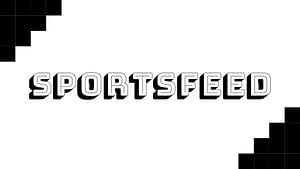Video Assistant Referee: A Weekly Premier League Drama
Every week, the Video Assistant Referee (VAR) seems to be at the center of controversy in the Premier League. Fans, players, and pundits alike are left scratching their heads, wondering how decisions are made and whether they are indeed correct. This week was no different, with several incidents sparking debate and discussion.
After each weekend, we delve into the major incidents to examine and explain the process, both in terms of VAR protocol and the Laws of the Game. This week, we focus on the Liverpool vs. Wolves match, where VAR decisions played a significant role.
Liverpool 2-1 Wolves
Possible Penalty Overturn: Agbadou Challenge on Jota
What happened: In the 58th minute, Liverpool’s Diogo Jota went to ground in the penalty area after a challenge from Emmanuel Agbadou. Referee Simon Hooper awarded a penalty, but VAR John Brooks had other ideas.
VAR decision: Penalty cancelled.
VAR review: This was only the fifth penalty overturned by VAR this season, and it was a clear case. The real question is why Jota wasn’t booked for simulation. The contact between defender and attacker is crucial. If a defender’s actions lead to a foul, the attacker isn’t responsible for avoiding contact. However, if the attacker initiates contact, as Jota did, it’s a different story.
Agbadou’s sliding tackle didn’t make contact with Jota, who had to place his boot into Agbadou to simulate a foul. Once Hooper reviewed the incident, he had the option to stick with his decision or even book Jota for simulation. However, booking for simulation is rare in the Premier League, with only one player, Callum Hudson-Odoi, being booked for it since VAR’s introduction.
Verdict: This was a clear case of initiated contact to win a penalty. Players often get away with it in the Premier League, but this shouldn’t be the case in such clear examples.
Possible Penalty Overturn: Sá Challenge on Díaz; Díaz on Agbadou
What happened: Liverpool were awarded a penalty in the 35th minute when Luis Díaz was brought down by José Sá. VAR checked the penalty and a possible foul by Díaz on Agbadou in the buildup.
VAR decision: Penalty stands, scored by Mohamed Salah.
VAR review: Díaz provided a textbook example of accepting contact, knowing Sá was coming out quickly. The responsibility lies with the Wolves goalkeeper. There was also a question about a possible foul on Agbadou, but the VAR didn’t intervene as there wasn’t clear evidence of a shove.
Verdict: For VAR to intervene, the push needs to be more obviously impactful. While there might be an argument for a foul, neither incident was a “clear and obvious” error.
Possible Onside: Disallowed Salah Goal
What happened: Salah thought he’d scored a third goal in the 51st minute, but the flag was raised for offside.
VAR decision: No goal.
VAR review: This was a quick check for the VAR, who identified from the tactical camera that Salah was offside. However, this wasn’t shown on television, leading to some frustration.
Verdict: It’s not ideal that definitive evidence isn’t shown. More might have been made of it had Liverpool not won the game.
Brighton 3-0 Chelsea
Possible Offside: Welbeck Before Minteh Goal
What happened: Brighton’s Yankuba Minteh scored in the 38th minute, but there was a question of offside against Danny Welbeck.
VAR decision: Goal stands.
VAR review: Welbeck wasn’t close enough to impact the defender, and the VAR decided it was a “deliberate play” by the defender, resetting the offside phase.
Verdict: It would have been better to place the lines and then send the referee to the monitor to judge the “deliberate play.”
Crystal Palace 1-2 Everton
Possible Ball in Play: Disallowed Lerma Goal
What happened: Crystal Palace’s Jefferson Lerma thought he had scored, but the assistant flagged that the ball had gone out of play.
VAR decision: No goal.
VAR review: The VAR needed definitive proof that the ball hadn’t gone out, which wasn’t available.
Verdict: It’s unfortunate for Palace, as the on-field decision stood due to lack of evidence.
Possible Offside: Mateta When Scoring
What happened: Jean-Philippe Mateta equalised for Crystal Palace, but it took over four minutes to check for offside.
VAR decision: Goal stands.
VAR review: Selhurst Park’s camera angles caused issues, but Mateta was onside with the tolerance level.
Verdict: Semi-automated VAR offside will improve the presentation and reduce time taken for decisions.
West Ham 0-1 Brentford
Possible Penalty: Challenge by Lewis-Potter on Bowen
What happened: Jarrod Bowen went down in the area, but referee Darren England wasn’t interested in awarding a penalty.
VAR decision: No penalty.
VAR review: There was holding by both players, and Bowen was caught by Lewis-Potter, but it wasn’t a “clear and obvious” error.
Verdict: It’s a classic referee’s call situation, with too much going on between the players for VAR to intervene.
Some factual parts of this article include information provided by the Premier League and PGMOL.
Originally Written by: Dale Johnson





















